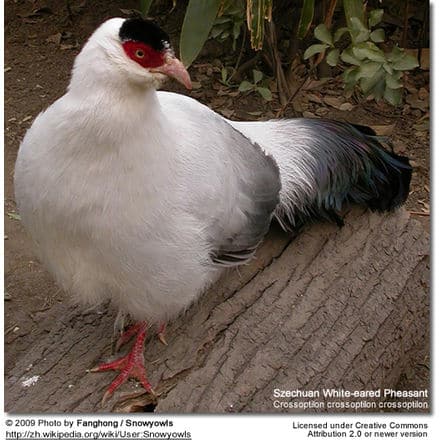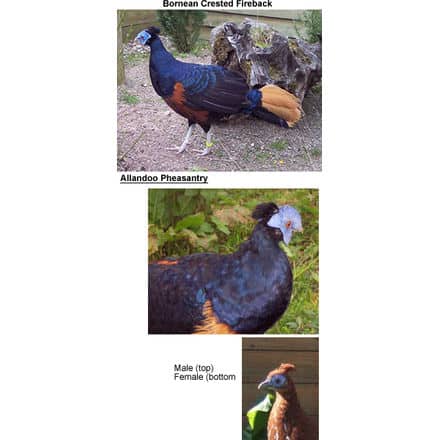Reeves’s Pheasant (Syrmaticus reevesii)
The Reeves’s Pheasants, Syrmaticus reevesii, is endemic to the evergreen forests of central and east China.
They have been introduced to Hawaii, the USA, the Czech Republic, France, and the United Kingdom, where they have built up small breeding populations and are still released on a small scale for shooting.
They are hardy birds and their call consists of a musical warble.
Due to ongoing habitat loss, and overhunting for food and its tail plumes, the Reeves’s Pheasant is evaluated as Vulnerable on the IUCN Red List of Threatened Species. There are thought to be only around 2,000 birds remaining in the wild, although they are fairly common in aviculture.
The name commemorates the English naturalist John R. Reeves.
Breeding:
Their breeding season usually starts in April or May and each clutch consists of about 7 to 14 eggs, which are incubated for 24 to 25 days.
Description:
The Reeves’s Pheasants large pheasant is up to 82 inches (~210cm) long. It has a scaled golden body plumage, grey legs, brown iris, and red skin around the eye. The head is white with a black narrow band extending from its eyes.
The male has an extremely long silvery white tail barred with chestnut brown.
The female, on the other hand, is rather plain in comparison – with mainly brown plumage, a blackish crown, a buff face, and grey-brown barred tail feathers.
This spectacular pheasant is memorialized in the Guinness Book of Records for having the longest natural tail feather of any bird species.
These pheasants are known to be aggressive towards humans, animals, and other pheasants.
Diet:
Their natural diet consists mainly of seeds and vegetables.
Other Related Web Links: Pheasant General Information … Pheasant Species … Pheasant Taxonomy … Breeding Pheasants … Pheasant Photo Gallery … Housing Pheasants … Pheasant Diseases



